What exactly is creativity? So many of us assume that creativity is something we had as a child but we lost, or something allocated to rarified individuals that we can only admire from afar.
But science has shown that, in many ways, we are all wired to create. The key is recognizing that creativity is multifaceted—on the level of the brain, personality, and the creative process—and can be displayed in many different ways, from the deeply personal experience of uncovering a new idea or experience to expressing ourselves through words, photos, fashion, and other everyday creations, to the work of renowned artists that transcends the ages.
Neuroscientists who study creativity have found that creativity does not involve a single brain region or even a single side of the brain, as the “right brain” myth of creativity suggests; instead, it draws on the whole brain. This complex process consists of many interacting cognitive systems (both conscious and unconscious) and emotions, with different brain regions recruited to handle each task and to work together as a team to get the job done.
The discovery of the “default network” of the brain—the part of the brain at work when we are not purposefully engaged in other tasks—is one of the most important recent discoveries in neuroscience. The default network enables us to construct personal meaning from our experiences, imagine other perspectives and scenarios, comprehend stories, and reflect on mental and emotional states—both our own and those of others. It should come as no surprise then that the activity of this network—as we like to call it, the “imagination network”—also informs our most creative ideas.
The “executive attention” network of the brain is also crucial to creativity, however. Executive control processes support creative thinking by helping us deliberately plan future actions, remember to use various creative tactics, keep track of which strategies we’ve already tried, and reject the most obvious ideas. They also help us focus our imagination, blocking out external distractions and allowing us to tune into our inner experiences.
When we generate new ideas, these networks—along with the salience network, which is responsible for motivation—engage in a complex dance. Researchers have observed this cognitive tango in action through the brain scans of people engaged in their personal creative processes. Initially, their brain states resemble a state of flow or complete absorption in the task. The imagination and salience networks are highly active, while the more focused executive domain is relatively quiet. However, as creative people further hone and refine their work, the executive attention network becomes increasingly more active.
Creative people are particularly good at exercising flexibility in activating and deactivating these brain networks that in most people tend to be at odds with each other. In doing so, they’re able to juggle seemingly contradictory modes of thought—cognitive and emotional, deliberate and spontaneous. Even on a neurological level, creativity is messy.
So, what can we do to augment this cognitive flexibility? In our book, Wired to Create, we explore how to develop creativity as a habit, a way of life, and a style of engaging with the world. We present many paradoxes—mindfulness and mind wandering, openness and sensitivity, solitude and collaboration, play and seriousness, and intuition and reason—that contribute to the creative process. We encourage people to embrace their paradoxes and complexities and open up to a deeper level of self-understanding and self-expression. It is precisely this ability to hold the self in all of its dimensional beauty that is the very core of creative achievement and creative fulfillment.
Here are the some of the habits of mind we recommend to foster more creativity in your life.
1. Imaginative play
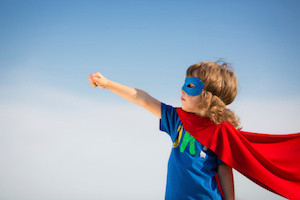
Observing children in imaginative play reveals a wellspring of natural-born creativity. When engaged in pretend play, children take on multiple perspectives and playfully manipulate emotions and ideas.
As adults, cultivating a childlike sense of play can revolutionize the way we work.
Research shows that hybrid forms of work and play may actually provide the most optimal context for learning and creativity, for both children and adults, and that play and intrinsic joy are intimately connected, creating a synergy that naturally leads to greater inspiration, effort, and creative growth.
2. Passion
Passion often stems from an experience or a relationship that moved us somehow and can lead to inspiration. It is often the emotional fuel that starts one down a creative path, but it’s only a start. People who fulfill their creative dreams over the long haul balance the excitement about the future with realistic strategies for getting closer to their goals; inspiration with hard work; and dreaming with doing.
When someone advises you to “Follow your passion,” use caution: aside from being one of the most common clichés out there, it’s not very helpful advice. You must look for passion that is in harmony with your authentic self and is compatible with your other activities. Passion to prove yourself to others will probably not result in creativity, as it relies on your avoiding challenges that would otherwise lead to growth. So, while you should be open to what inspires you, don’t follow passion blindly. Make sure it truly resonates with you and your skills.
3. Daydreaming
Creative people know, despite what their parents and teachers might have told them, that daydreaming is anything but a waste of time. A review of the latest science of daydreaming has shown that mind wandering offers very personal rewards, including creative incubation, self-awareness, future planning, reflection on the meaning of one’s experiences, and even compassion.
Idle though it may seem, the act of mind wandering is often anything but mindless; it can lead to improvements in creative thinking. So, the next time you’re working hard on a creative project or work assignment that requires intense focus and creative chops, try taking a five-minute daydreaming break every hour. Try engaging in a simple activity that will allow your mind to wander, like walking, doodling, or cleaning, and see how it affects your ideas and thinking.
4. Solitude
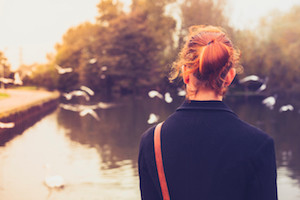
The metaphorical “room of one’s own” is a basic need for many creative people. Now, science has reinforced what the work habits of countless artists have demonstrated: Time for solitary reflection truly feeds the creative mind.
Neuroscientists have discovered that solitary, inwardly focused reflection employs a different brain network than outwardly focused attention. When our mental focus is directed towards the outside world, the executive attention network is activated, while the imagination network is typically suppressed. This is why our best ideas don’t tend to arise when our attention is fully engaged on the outside world.
It’s important to make time for solitude, to give yourself space to reflect, make new connections, and find meaning. Unfortunately, solitude is widely undervalued in society, leading many people to shy away from alone time. We tend to view time spent alone as time wasted or as an indication of an antisocial or melancholy personality. But the ability to enjoy and make productive use of our own company can trigger creativity by helping us tap into our thoughts and our own inner worlds. So, don’t avoid it…embrace it!
5. Intuition
Intuition arises from unconscious, or spontaneous, information-processing systems, and it plays an important role in how we think, reason, create, and behave socially. Over the past thirty years, cognitive scientists have made huge strides in demystifying the power of the unconscious mind, leading to the recognition of a dual-process theory of human cognition—or the “fast and slow brain” theory. Intuition is part of the fast brain system.
The fast brain is structurally more sophisticated than the slow brain. It helps us assimilate new information into our existing knowledge structures, and aids us in complex pattern recognition and in making unconventional connections that lead to more original ideas and solutions. The fast brain plays the largest role when generating creative ideas, while the more deliberate slow brain play a larger role when exploring those ideas and playing around with them, to determine their uses and applications. Both the fast brain and slow brain have a role to play.
6. Openness to experience
 © Flickr / Soldatnytt
© Flickr / Soldatnytt
Openness to experience—the drive for cognitive exploration of one’s inner and outer worlds—is the single strongest and most consistent personality trait that predicts creative achievement. Openness can be intellectual, characterized by a searching for truth and the drive to engage with ideas; aesthetic, characterized by the drive to explore fantasy and art and experience emotional absorption in beauty; or affective, characterized by exploring the depths of human emotion.
Research has found that the desire to learn and discover seems to have significantly more bearing on the quality of creative work than intellect alone. So, if you want to boost your creativity, try out a new creative outlet or a totally different medium of expression, or take a new route home from work, or seek out a new group of people with different interests or values that you might learn from. Openness to new experiences can help increase your integrative complexity—the capacity to recognize new patterns and find links among seemingly unrelated pieces of information.
7. Mindfulness
While the capacity to observe the present moment without distraction or judgment is a vital skill for anyone who seeks joy and fulfillment in life, it’s particularly important for creative thinkers.
A large body of research has associated mindfulness—both as a practice and as a personality trait—with many cognitive and psychological benefits like improved task concentration and sustained attention, empathy and compassion, introspection, self-regulation, enhanced memory and improved learning, and positive affect and emotional wellbeing. Many of these are central to creativity.
However, for optimum cognitive flexibility and creativity, it’s best to achieve a balance of mindfulness and mind wandering. Some forms of mindfulness may actually work against creativity—specifically, those that encourage one to let go of thinking rather than accepting thoughts in a more open manner. Interestingly, open-monitoring meditation, which emphasizes tuning into one’s subjective experience, has been found to increase both the activation and the functional connectivity of the imagination network. So, try practicing an open-monitoring or nondirective form of meditation, and allow for constructive mind-wandering while also boosting attention.
8. Sensitivity
If we think of creativity as “connecting the dots” in some way, then sensitive people—those who have a heightened sensitivity to their surroundings and also an intensified experience of sensory input, like for sound, lighting, and scent—experience a world in which there are both more dots and more opportunities for connection.
Sensitivity can be both a blessing and a curse—leading to a greater intensity of experience as well as emotional overwhelm. Journalist Andrea Bartz wrote in Psychology Today that “those who learn to dial down the relentless swooping and cresting of emotion that is the almost invariable accompaniment to extreme sensitivity are able to transform raw perception into keen perceptiveness.”
So, rather than trying to harden yourself, you may want to harness your sensitivity into artistic expression.
9. Turning adversity to advantage
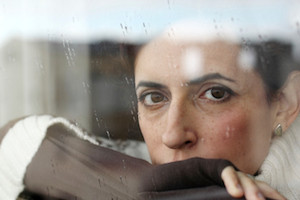
Experiences of loss, struggle, suffering, and defeat can be powerful catalysts for personal growth, creativity, and deep transformation. It is often through suffering that we learn compassion, from loss that we learn understanding, and from overcoming struggles that we come to discover our own strength and beauty.
Adverse events can force us to reexamine our beliefs and life projects, and therein lie their power and creative potential. After the experience of adversity, the mind is actively dismantling old belief systems that no longer hold up and creating new structures of meaning and identity. To make meaning of difficult experiences, try expressive writing, which research has found can lessen symptoms of post-traumatic stress and depression, while improving some cognitive functions, like working memory.
Interestingly, research has also found that extreme positive events—in particular, those that evoke feelings of awe, wonder, inspiration, and connection to something greater than the self—can also encourage creativity. Positive emotions build a person’s psychological resources, broadening attention, inspiring new thoughts and behaviors, and stimulating creative thinking. So, if you’re looking for a creative boost, treat all of life’s meaningful moments—the good and the bad—as potential sources of inspiration and motivation.
10. Thinking differently
Creative people are united by their unwillingness to abide by conventional ways of thinking and doing things. In choosing to do things differently, they accept the possibility of uncertainty and failure—but it is precisely this risk that opens up the possibility of true innovation.
The secret to creative greatness appears to be doing things differently even when that means failing. Especially during idea-generation phases, trial-and-error is essential for innovation. Dean Keith Simonton, who studies creativity, found that the quality of creative ideas is a positive function of quantity: The more ideas creators generate, the greater chances they will produce an eventual masterpiece. Doing things differently means you will probably do things badly or wrong; so expect that and don’t let caution get in the way of creativity.
Will following all of these routes to creativity mean you will become a creative genius? Not necessarily. But, when the artist is alive in any person, whatever his kind of work may be, he becomes an inventive, searching, daring, self-expressive creature. If we learn to embrace our own messy, creative selves, we give others permission to do the same. We help create a world that is more welcoming of the creative spirit, and we make it possible to find a greater connection with others and with ourselves in the process.
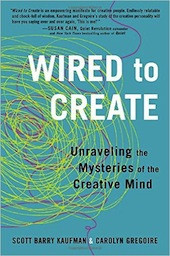



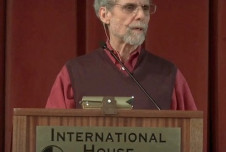
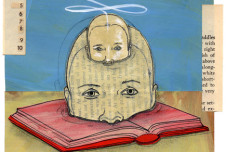

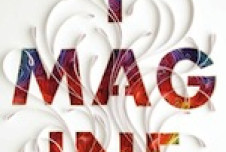
Comments